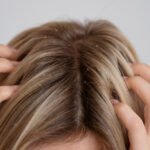Hair care trends come and go, but one method that has gained popularity in recent years is “reverse washing.” Unlike traditional washing, where you apply shampoo first and then follow up with conditioner, reverse washing involves conditioning your hair before shampooing. It may sound counterintuitive, but this technique offers several benefits, especially for those with fine, oily, or easily weighed-down hair. Here’s everything you need to know about reverse washing, why it’s effective, and whether it could be the right choice for you.
What is Reverse Washing?
Reverse washing is a simple yet effective method of washing your hair in which you switch the order of your shampoo and conditioner. Instead of applying shampoo first, you start with conditioner, allowing it to nourish and moisturize your hair. After rinsing the conditioner out, you then shampoo to cleanse away excess oils, product build-up, and even residual conditioner that can weigh your hair down.
Benefits of Reverse Washing
Reverse washing may seem like a minor adjustment to your hair-washing routine, but it can make a big difference for certain hair types and concerns. Here’s a look at some of the benefits:
1. Lightweight Hydration for Fine Hair
For people with fine or thin hair, traditional conditioning can often leave hair feeling greasy or weighed down, especially at the roots. Reverse washing allows you to condition first, providing lightweight hydration and nourishment. Shampooing after conditioning helps rinse out any heavy residue, leaving your hair feeling clean but still moisturized.
2. Adds Volume and Body
Reverse washing can give a noticeable boost in volume and body to limp, flat hair. By conditioning first, the hair receives moisture without the excess weight that can sometimes come from leaving conditioner in. The result is hair that feels bouncy and full, perfect for those who struggle with flat, lifeless strands.
3. Reduces Product Build-Up
Traditional conditioning after shampooing can lead to product build-up, especially when thicker or heavier conditioners are used. This build-up can dull your hair and weigh it down over time. With reverse washing, shampooing after conditioning helps to remove any excess product, preventing residue and keeping your hair looking fresh and vibrant.
4. Helps Balance Oil Production
For people with oily hair or those who find themselves reaching for dry shampoo often, reverse washing can help balance oil production. Shampooing last gives the scalp a thorough cleanse and leaves it feeling refreshed, reducing the likelihood of excess oil buildup at the roots.
5. Enhances Manageability and Shine
Because reverse washing allows you to condition without risking a heavy, greasy feel, you may find your hair easier to style and manage afterward. It can leave hair feeling soft, smooth, and with a healthy, natural shine that doesn’t look or feel greasy.
Who Should Try Reverse Washing?
Reverse washing isn’t for everyone, but it can be highly beneficial for people with specific hair types and concerns. Here’s who might benefit the most:
- Fine, Thin, or Oily Hair: Reverse washing can help prevent hair from feeling weighed down, greasy, or limp.
- Curly or Wavy Hair: Curly-haired people can benefit from reverse washing because it allows them to add moisture without disrupting their curl pattern or creating extra build-up.
- People with Dry Ends: If your ends tend to get dry but your roots get greasy, reverse washing can be a game-changer, hydrating where needed and leaving roots feeling light and fresh.
If you have dry or coarse hair, traditional conditioning might work better to retain moisture, but for fine, oily, or weighed-down hair, reverse washing can bring great results.
How to Reverse Wash Your Hair
If you’re ready to give reverse washing a try, here’s a step-by-step guide to getting it right.
- Start with Conditioner: Begin by thoroughly wetting your hair and then applying conditioner from mid-length to the ends. Avoid applying conditioner directly to your scalp to prevent any extra weight at the roots.
- Leave It In: Allow the conditioner to sit in your hair for a few minutes (2-5 minutes is usually sufficient). This gives it time to penetrate your strands and provide moisture.
- Rinse Thoroughly: Rinse out the conditioner completely. Take your time to ensure that there’s no residue left behind, as this can weigh down your hair.
- Apply Shampoo: Now, apply shampoo to your scalp and roots, massaging it in to cleanse away oils and any leftover conditioner.
- Rinse and Style: Rinse the shampoo thoroughly and style your hair as usual. You should notice a lighter, bouncier texture with added volume and shine.
Reverse Washing Tips for Best Results
To get the most out of reverse washing, here are a few extra tips:
- Use Lightweight Conditioners: Opt for a lightweight, rinse-out conditioner that won’t leave too much residue. Avoid heavy, rich conditioners if you have fine or oily hair.
- Shampoo Gently: Since you’re shampooing after conditioning, use a gentle, sulfate-free shampoo to avoid stripping too much moisture from your hair.
- Experiment with Frequency: You may not need to reverse wash every time you cleanse your hair. Experiment with alternating between traditional and reverse washing to find a balance that works best for your hair type.
Potential Downsides of Reverse Washing
While reverse washing has many benefits, it may not be ideal for everyone. Here are some factors to consider:
- Not Ideal for Very Dry or Coarse Hair: If your hair is very dry or coarse, you may find that conditioning first doesn’t give you the long-lasting moisture you need. Traditional conditioning may be a better option.
- Trial and Error: Reverse washing results can vary depending on hair type, so it may take a few tries to determine whether it’s right for you.
- Product Suitability: Certain shampoos and conditioners are formulated for traditional use, so using them in reverse might not yield the best results. Try experimenting with products that work well for your hair type.
Image credits: Image from Freepik








No Comment! Be the first one.